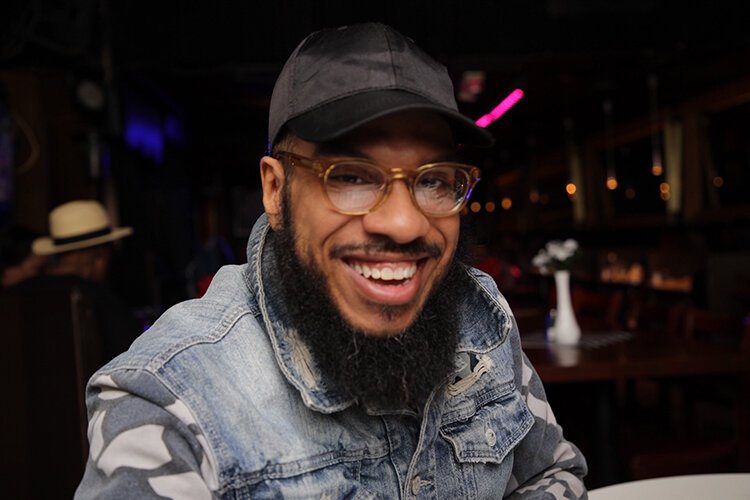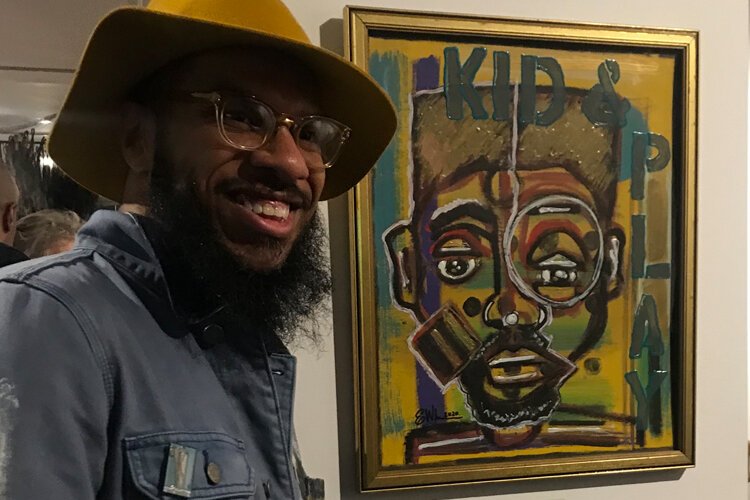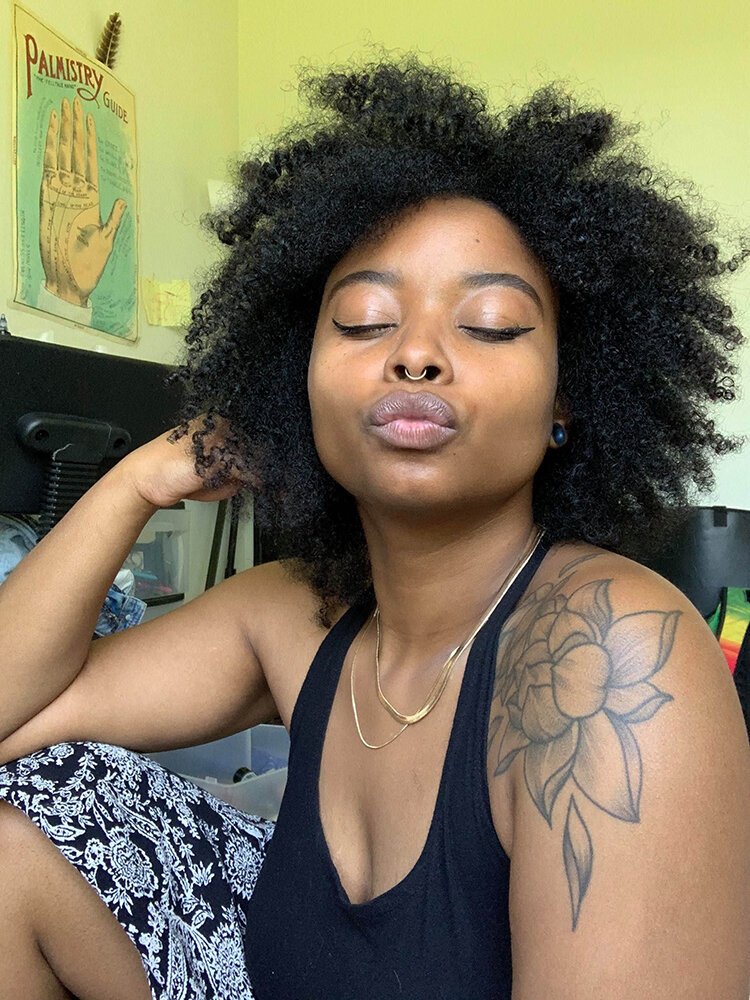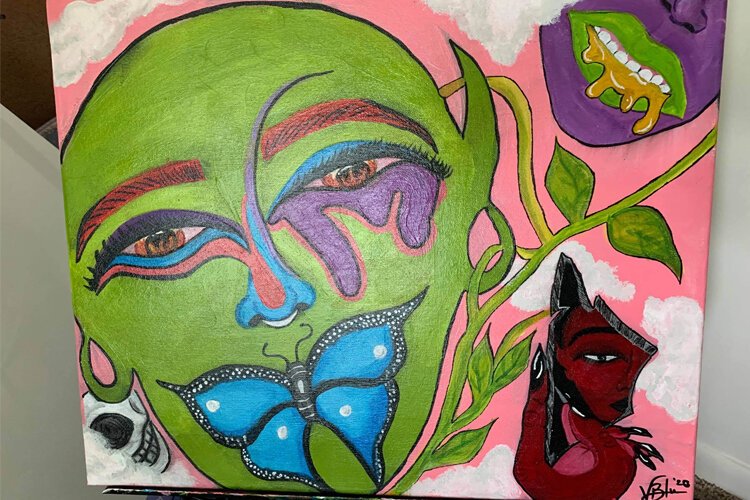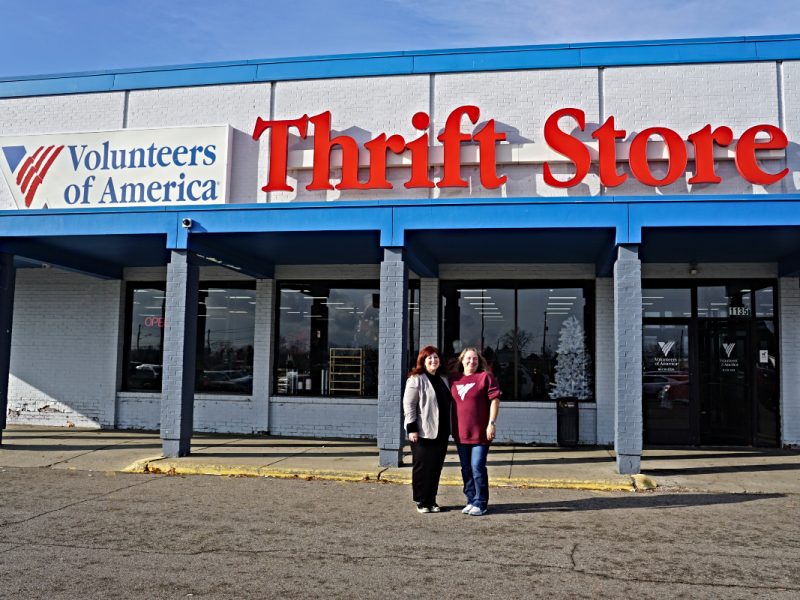Creativity during coronavirus: How these Flint artists are surviving in the midst of a pandemic
While quarantine has helped foster creativity, the impact economically has been significant with events canceled, paid work opportunities drying up, and venues closed. How do artists who depend on having showing their work and having it seen survive? They adapt, just like any other small business has had to do.
Flint has always had a vibrant artists scene. From the acclaimed works at Flint Institute of Arts to the mural initiative that began in early 2019, art and artists are as ingrained in this city as the auto industry.
Art has the power to revitalize a community that has faced adversity time and time again and more importantly showcase how public art speaks to the moment we are living in. And not only do artists help shape their city, they’re also shaped by it.
With the closure of local bars and restaurants and cancelation of Flint’s highly anticipated downtown summer events, the impact of the coronavirus pandemic and ensuing shutdown hit Flint and Genesee County hard. Indeed, these were blows to both the local economy and community, but the people of Flint rallied and pulled together to support small businesses. But what about its artists?
Despite heavy limitations and loss of opportunities, creativity during the coronavirus hasn’t just survived during these challenging times, but it’s thrived. And while the pandemic has also affected artists economically, local creatives have found a way to adapt.
Some artists chose to embrace quarantine, such as Errin G. Whitaker who grew up in Flint. After obtaining degrees from both Oakland and Trevecca Nazarene Universities and spending 10 years in Detroit where his art career, he came back to Flint where he now lives and works as an interventionist for the Flint Cultural Center Academy.
“The pandemic has caused me to be more reflective about not just my craft but who I am as an artist in general. I have found myself meditating more and seeing visions that influence my work based upon the variety [of] introspective experience I have had throughout. I also have found that in moments of heavy emotions, I create art as a form of therapy to cope with the changing world.”
While Whitaker admits to missing “crossing paths with humans,” he made a deliberate choice to focus on refining his craft as well as improving his health during the shutdown. He also took the time to self-reflect and become more knowledgeable about his culture. He also took on projects he otherwise may not have.
“I have dabbled in doing art murals that are easier to do from a social distant standpoint as well as new projects/shows where audiences can come see artwork yet remain safe,” he says. This month, Black Wall Street Gallery in Tulsa, Oklahoma, is exhibiting his work through “Souls of Black Folk” as part of the gallery’s “The Healing Series.” His work is influenced by Dr. W.E.B. DuBois’ book of the same name, he says, and is a culmination of months of “new beginnings and evolutions … focusing on those reminiscing of our pasts and celebrates the double consciousness of our future,” he posted on Instagram.
Another local artist, painter Venus Blu, who was born and raised in Flint, echoes his sentiments on the opportunity sheltering in place has provided.
“If anything, quarantine help me improve my art, the way I see my art. I began staring at my pieces for days before I made the jump to start trying new things, I’ve been trying new things. Quarantine gave me time,” says Blu.
While Blu and Whittaker say quarantine has been positive, there were still some challenges.
“I have found it hard to find material to create and honestly forced myself to rework old pieces of art in attempts to refine,” Whitaker says. “The pandemic has seemed to shift my thoughts of contentment into more attractive art that has been cultivated by me and it spending way more time together; I have time to work on art but not always the energy or right material to deepen it.”
He also wonders if there will be an opportunity to reach bigger audiences again in the long term. “I have experienced the notion of wondering when the next opportunity for me to show my work to a large audience in such as ‘an art exhibition’ again considering the societal effects of pandemic.”
While quarantine has helped foster creativity, the impact economically has been significant with events canceled, paid work opportunities drying up, and venues closed. How do artists who depend on having showing their work and having it seen survive? They adapt, just like any other small business has had to do.
Whitaker attributes a loss in sales due to the pandemic to the fact that he hasn’t been able to showcase his work in person.
“It helps to have the audience to be directly in front of works of art to be emotionally, spiritually and mentally connected and truly understand the need to have the art in their home, workspaces, worship places, etc.” he explains.
Instead of taking a loss at face value, Whitaker adopted a four-point plan to ensure his artwork was still available for the world to appreciate and purchase.
He began hosting online tours and held Zoom meetings with 20-30 artists and collectors. He also collaborated with other individuals in live discussions via social media platforms such as Facebook and Instagram as well as hosting appointment only and mask-covered home tours for screened individuals who inquire about his work.
Lastly, he started a newsletter and mailed out information about new work, new series, and upcoming shows.
For Whitaker, the plan proved to be successful in reaching out beyond Flint and its surrounding communities.
“Most of my work sold during the pandemic has come from other places outside of Flint, Michigan. I sold an art piece to a few collectors in Texas, D.C., Chicago, Atlanta, and China. The community seems to be content often with receiving emails or messages of photos and selecting work based upon what they can feel based on what I send with description of dimensions/mediums/title.”
Blu had an uptick of interest locally and has found it especially encouraging. “A lot of people have been inquiring about my art lately, that support gives me the momentum to show what else I can do.”
Find out more about Errin G. Whitaker on Facebook and Instagram. Venus Blu can be found on Facebook here and on Instagram here.

